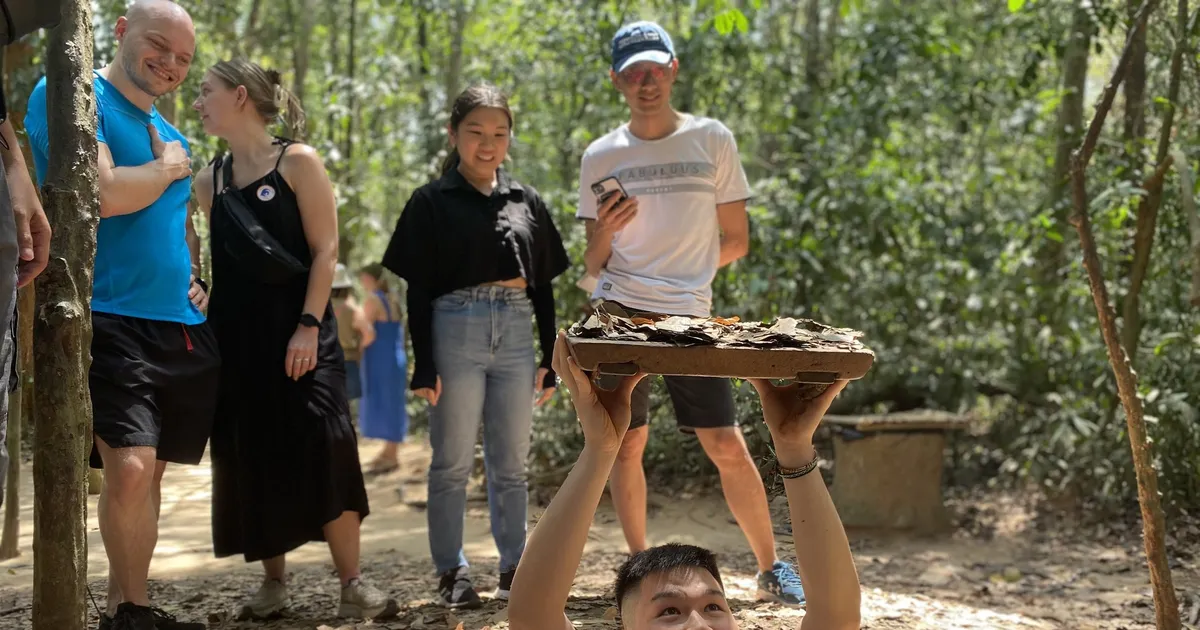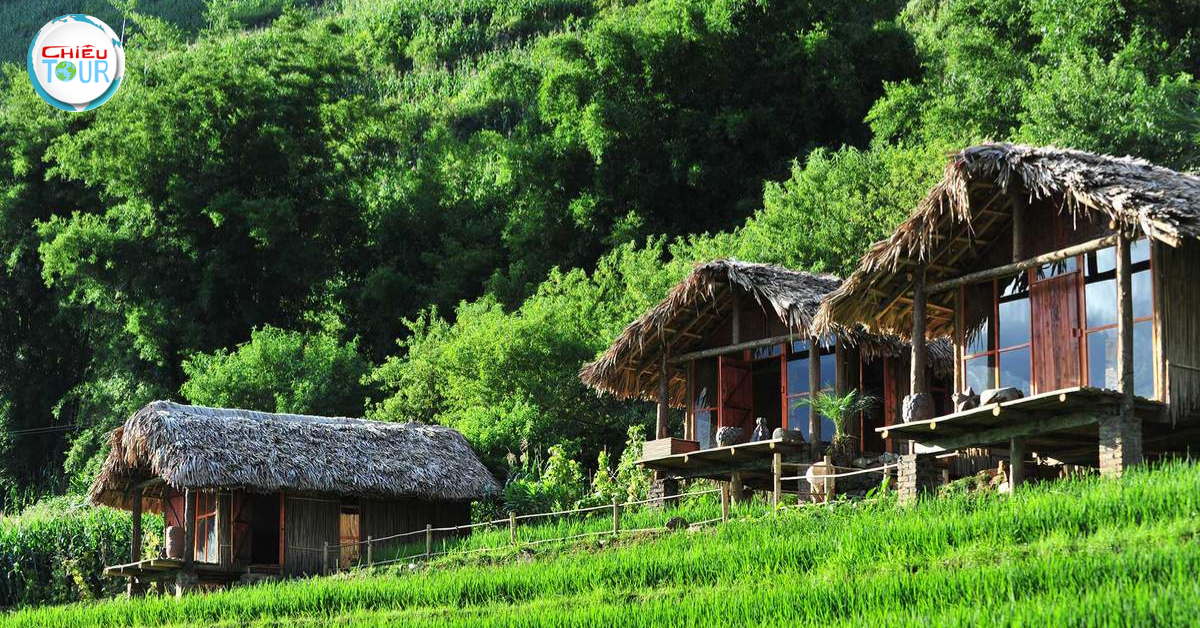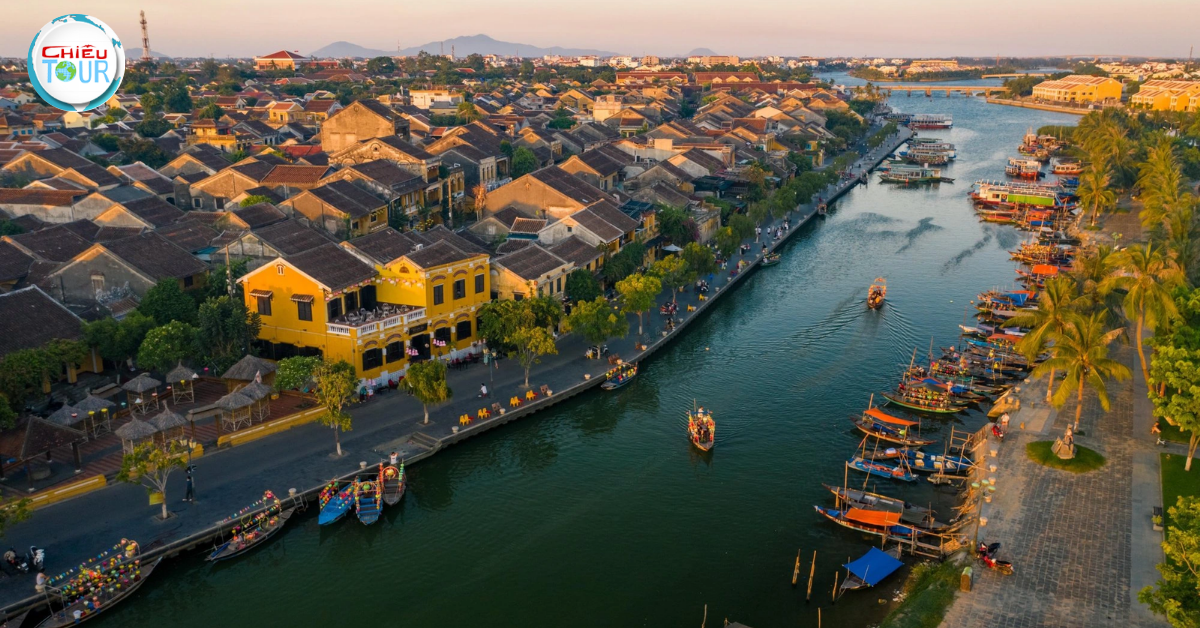CU CHI TUNNEL THE WAR FROM WITHIN THE EARTH
- Author: Admin
- | Hot destination
CU CHI TUNNEL THE WAR FROM WITHIN THE EARTH
The Cu Chi Tunnels, located in the Cu Chi District of Ho Chi Minh City, Vietnam, are a remarkable network of underground passages that played a crucial role during the Vietnam War. Spanning over 200 kilometers, these tunnels served as hiding spots, storage facilities, and communication routes for Viet Cong guerrilla fighters. The ingenuity behind the construction of these tunnels reflects the resilience and resourcefulness of the Vietnamese people during one of the most tumultuous periods in their history.
Using water to destroy the
The use of water as a method to infiltrate and destroy the Cu Chi Tunnels has unique historical significance. Water was not merely a natural element; it became a formidable weapon against the network of intricate passages buried beneath the earth.
The Role of Natural Resources
Water is an abundant resource in Vietnam, especially in regions like Cu Chi, where rivers and streams crisscross the landscape. The Viet Cong understood the terrain intimately and utilized this knowledge to build their tunnels at strategic depths, often below the water table to ensure they remained hidden from enemy forces.
However, when American soldiers sought to neutralize the tunnel system, they turned to water as a potential combatant. Engineers devised plans to flood sections of the tunnels, which would render them uninhabitable and force any remaining occupants to evacuate. This tactic also aimed to disrupt supply lines and communication, crippling the Viet Cong's ability to wage guerrilla warfare effectively.
The Challenges of Water Warfare
Attempting to flood the tunnels was not without its challenges. First, pinpointing the exact locations of the tunnels required extensive intelligence-gathering efforts. Many sections of the tunnels were camouflaged, making them difficult to detect. Additionally, flooding could have unintended consequences; the water might seep into agricultural fields or nearby villages, disrupting the lives of innocent civilians, a situation that American military planners were keen to avoid.
Moreover, the tunnels themselves were designed to withstand natural disasters such as floods, thanks to their intricate drainage systems that allowed water to flow in and out without compromising the structural integrity of the tunnels. This meant that even with relentless flooding efforts, complete destruction of the tunnel system proved elusive.
The Psychological Impact of Water Warfare
Despite its ineffectiveness in achieving total destruction, the strategy of using water to combat the Cu Chi Tunnels had psychological implications. The mere threat of flooding created an atmosphere of fear among Viet Cong fighters and local civilians alike. They understood that the war was not only being fought above ground but also within the earth itself, creating a profound sense of vulnerability.
This psychological warfare added another layer to the already complex dynamics of the conflict, revealing that warfare transcends physical destruction and extends into the realm of belief and perception. The Cu Chi Tunnels, specifically, transformed into symbols of resistance—despite attempts to eradicate them, the tenacity of those who used these tunnels only seemed to grow stronger.
Using rat troops to attack the tunnels
With their keen senses and small sizes, rats became an invaluable asset in the search for hidden tunnels. The idea of deploying rodents to carry out reconnaissance missions may seem peculiar at first glance, but it highlights the creativity and adaptability often necessary in warfare.
The Role of Rats in Intelligence Gathering
Rats are naturally curious creatures with excellent olfactory senses, making them prime candidates for locating hidden compartments and passageways within the Cu Chi Tunnels. Soldiers trained these animals to navigate through narrow openings and identify areas of interest, enabling intelligence teams to gather information on the layout and extent of the tunnel systems without risking human lives.
In addition to their impressive tracking abilities, rats can also travel great distances quickly. This made them ideal for carrying small microphones or other surveillance equipment into hard-to-reach places. Their stealthiness provided the advantage of surprise, allowing for unexpected insights into Viet Cong operations.
Ethical Considerations of Using Animals in Warfare
As fascinating as the utilization of rats may be, ethical questions arise regarding animal welfare. Training these creatures for potentially life-threatening missions raises concerns about their treatment and the moral implications of using living beings in warfare.
Nonetheless, the use of rats does reflect a broader trend in military strategy where unconventional methods become pivotal in achieving objectives. As countries grapple with the ethics of employing sentient beings in conflict, the story of rat troops serves as an example of the lengths to which nations will go to secure an advantage.
The Legacy of Rat Troops
The deployment of rat troops in relation to the Cu Chi Tunnels has since inspired various cultures and military branches worldwide. Today, we see the continued use of animals in roles that range from detection to reconnaissance, sparking discussions regarding the future of warfare and the role of non-human agents in these conflicts.
In retrospect, the intriguing combination of biology and technology represented by rat troops epitomizes the innovative spirit of the Vietnam War, showcasing how adaptation and resourcefulness can emerge even in times of desperation. They serve as a reminder that sometimes the smallest creatures can make the biggest impact on the battlefield.
Using Belgian Malinois dogs to break through the
The utilization of Belgian Malinois dogs represents another strategic approach to dismantling the Cu Chi Tunnels. Renowned for their agility, intelligence, and unmatched sense of smell, these working dogs have earned a reputation as essential partners in the military landscape.
Understanding the Capabilities of Belgian Malinois
Belgian Malinois dogs are naturally predisposed to working alongside humans due to their trainable nature and loyalty. In the context of the Cu Chi Tunnels, these dogs were trained to locate hidden entrances, track Viet Cong personnel, and even detect explosives that may have been concealed within the tunnel systems.
Their acute sense of smell allowed them to differentiate between human scents and other environmental odors, significantly enhancing the efficiency of search operations. Moreover, their size enabled them to move swiftly through dense jungles and narrow passages, making them perfect companions for soldiers navigating the challenging terrain surrounding the tunnels.
Training Military Dogs for Tunnel Warfare
Training programs for military dogs are extensive and rigorous, aiming to hone their instincts and capabilities. Dogs undergo training sessions that simulate real-world scenarios, ensuring they can confidently operate in high-stress environments.
In the case of the Cu Chi Tunnels, specific focus was placed on encouraging the dogs to search for signs of life or any suspicious activity near potential tunnel entrances. Their ability to alert handlers before human intervention was critical, saving lives and minimizing risks during operations.
The Bond Between Soldier and Dog
Beyond their operational effectiveness, Belgian Malinois dogs create deep connections with their handlers. This bond enhances communication and teamwork, facilitating successful missions. Soldiers often speak of the emotional support their canine companions provide, helping alleviate stress and trauma experienced during combat.
Reflecting on the experiences shared by these soldiers fosters a deeper understanding of the psychological dimensions of war. The partnership between man and dog transcends traditional notions of warfare, underpinning the themes of camaraderie and trust that are vital in extreme circumstances.
By analyzing the role of Belgian Malinois dogs in the context of the Cu Chi Tunnels, we recognize the multifaceted nature of warfare. It goes beyond strategies and tactics to embrace relationships grounded in mutual respect and understanding. The legacy of these dogs continues to influence modern-day military operations, showcasing the enduring synergy between humans and their four-legged allies.
Using heavy machinery to bulldoze the tunnels
Heavy machinery marked a significant shift in tactics employed against the Cu Chi Tunnels. As American forces recognized the need for brute strength to penetrate the vast tunnel networks, bulldozers and other equipment became integral components of their strategy.
The Evolution of Wartime Machinery
The introduction of heavy machinery during the Vietnam War reflected technological advancements in warfare. No longer confined to hand tools and basic implements, modern armies embraced machines that could wreak havoc on underground structures with relentless efficiency.
When targeting the Cu Chi Tunnels, soldiers relied on bulldozers to excavate large swathes of land and systematically dismantle suspected tunnel entrances. The sheer weight and power of these machines posed a serious threat to the tunnels' structural integrity, as they were capable of collapsing vast sections beneath the surface.

The Consequences of Bulldozing
While the employment of heavy machinery might have appeared effective in theory, the practical outcomes were mixed. The process of bulldozing the tunnels often resulted in collateral damage to the surrounding environment, destroying crops and displacing families residing nearby.
Additionally, the tunnels’ complexity and design allowed certain areas to remain structurally sound even after bulldozing efforts. Often, Viet Cong fighters could simply retreat deeper underground or relocate to alternative entry points, rendering the use of machinery less impactful than intended.
The Environmental Ramifications
The environmental impact of bulldozing tunnels cannot be understated. Forests that once teemed with biodiversity were decimated, leading to long-term consequences for local ecosystems. The loss of habitat disrupted wildlife populations and altered the delicate balance of the natural order.
In retrospect, the reliance on heavy machinery illustrates the short-sightedness that sometimes accompanies military strategies. While the goal might be to achieve victory through overwhelming force, the repercussions extend far beyond the battlefield, affecting entire communities and ecosystems.
The lessons learned from the use of heavy machinery against the Cu Chi Tunnels emphasize the importance of considering both immediate and long-term effects of warfare. Recognizing the interconnectedness of humanity and nature is paramount in shaping future approaches to conflict resolution.
Planting grass to alter the terrain
Planting grass and vegetation around the Cu Chi Tunnels represents an ingenious tactic in camouflage and terrain management. The natural world plays a significant role in concealing military operations, creating an ecosystem that thrives even amidst the turmoil of war.
The Importance of Camouflage
Camouflage is a fundamental aspect of military strategy, particularly in guerrilla warfare. The Viet Cong understood that blending in with the surrounding environment was critical to their survival. By planting grass and cultivating foliage around tunnel entrances, they effectively obscured their operations from aerial surveillance and ground patrols.
Creating an illusion of normalcy allowed the Viet Cong to move freely beneath the surface while keeping their activities hidden from view. This practice exemplified the strategic mastery demonstrated by those fighting for their homeland, emphasizing the importance of utilizing available resources to gain an advantage over adversaries.
The Ecological Perspective
From an ecological standpoint, planting grass and vegetation served further purposes. The growth of flora contributed to soil stability, preventing erosion and maintaining the integrity of tunnel entrances. Such actions reveal an appreciation for the environment that transcends the immediate goals of warfare, illustrating a profound connection between resistance and stewardship.
In many ways, the act of nurturing the land mirrors the spirit of resilience exhibited by the Vietnamese people throughout history. Even amidst conflict, there remains a recognition of the intrinsic value of nature—a value that persists long after the sounds of gunfire fade.
Future Implications for Land Management
The principles underlying the planting of grass around the Cu Chi Tunnels offer valuable insights into contemporary land management practices. Initiatives focusing on reforestation and sustainable agriculture can promote ecological recovery from the scars of war while fostering community engagement and economic development.
Reflecting on the past, we can draw inspiration from the cultural heritage and traditions that celebrate the relationship between humanity and nature. The resilient spirit embodied in the planting of grass around the Cu Chi Tunnels serves as a reminder of the potential for renewal and regeneration, even in the darkest of times.

CU CHI TUNNELS: A TRADITIONAL MEETING POINT FOR ALL GENERATIONS AND A SOURCE OF ADMIRATION FOR FRIENDS AROUND THE WORLD
The Cu Chi Tunnels have transcended their original purpose as military installations to become historical landmarks reflecting the bravery and determination of the Vietnamese people. They symbolize a legacy of resistance, embodying the strength found in unity and the fight for freedom.
The Cultural Significance of the Tunnels
For generations, the Cu Chi Tunnels served not only as a tactical means of survival during the Vietnam War but also as a cultural and communal hub. Local residents utilized the tunnels for shelter, gathering, and even festivities. These spaces fostered a sense of belonging and identity among those who called Cu Chi home, solidifying communal bonds forged in adversity.
As the war concluded, the tunnels evolved into symbols of resilience and perseverance. They serve as reminders of the sacrifices made by countless individuals who fought for their beliefs, reinforcing the notion that courage transcends borders and resonates deeply within the human spirit.
Global Recognition and Tourism
Today, the Cu Chi Tunnels attract visitors from all corners of the globe. Tourists flock to witness the ingenuity and tenacity of those who survived beneath the earth’s surface. Guided tours introduce guests to the tunnel network's fascinating history, immersing them in stories that encapsulate the complexities of warfare and survival.
This global recognition transforms the tunnels into sites of education and reflection, inspiring conversations about peace, reconciliation, and understanding. Visitors depart with newfound respect for the strength of the Vietnamese people, fostering connections between cultures that endure long after their journey ends.
The Role of Memory and Education
Preserving the memory of the Cu Chi Tunnels is crucial for future generations. Educational programs and initiatives aim to capture the essence of this remarkable place, imparting lessons that extend beyond the confines of history. Through storytelling, workshops, and interactive exhibits, young people are encouraged to engage with the narratives surrounding the tunnels, prompting critical discussions about conflict, resilience, and humanity
The need to educate future generations on the realities of war—informed by empathy and compassion—cannot be overstated. By cultivating understanding across cultural divides, we can work toward a more peaceful and harmonious existence, breaking the cycles of violence that continue to haunt our world.

Through the lens of the Cu Chi Tunnels, we can grasp the profound impact of history on shaping our collective consciousness. As a source of admiration for friends around the world, they remind us of the extraordinary capacity of the human spirit to endure, adapt, and ultimately prevail.
Conclusion
The Cu Chi Tunnels stand as a testament to the resilience, creativity, and strength of the Vietnamese people during the Vietnam War. From the innovative use of water, rat troops, and Belgian Malinois dogs to the brute force of heavy machinery and the subtle art of camouflage through planting grass, each approach reveals the multifaceted strategies deployed to combat this intricate underground network.
As we reflect on the legacy of the Cu Chi Tunnels, we must appreciate their role not only in the context of war but also as a symbol of cultural identity, resilience, and hope. The enduring significance of these tunnels inspires us to seek connections across borders, fostering understanding and promoting a shared commitment to peace.
Ultimately, the history woven into the fabric of the Cu Chi Tunnels beckons us to confront the complexities of our past while striving towards a brighter, more inclusive future. As we navigate the challenges of our world today, let us carry forward the lessons learned from this remarkable site, valuing the indomitable spirit that resides within all of us.
See more: Cu Chi Tunnels Group Tour Half Day
Cu Chi Tunnels - HCM City Tour For 1 Day
Cu Chi Tunnels - Mekong Delta Full Day
 Vietnam
Vietnam 





